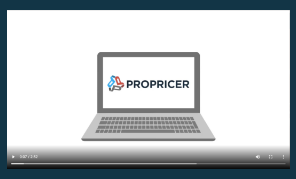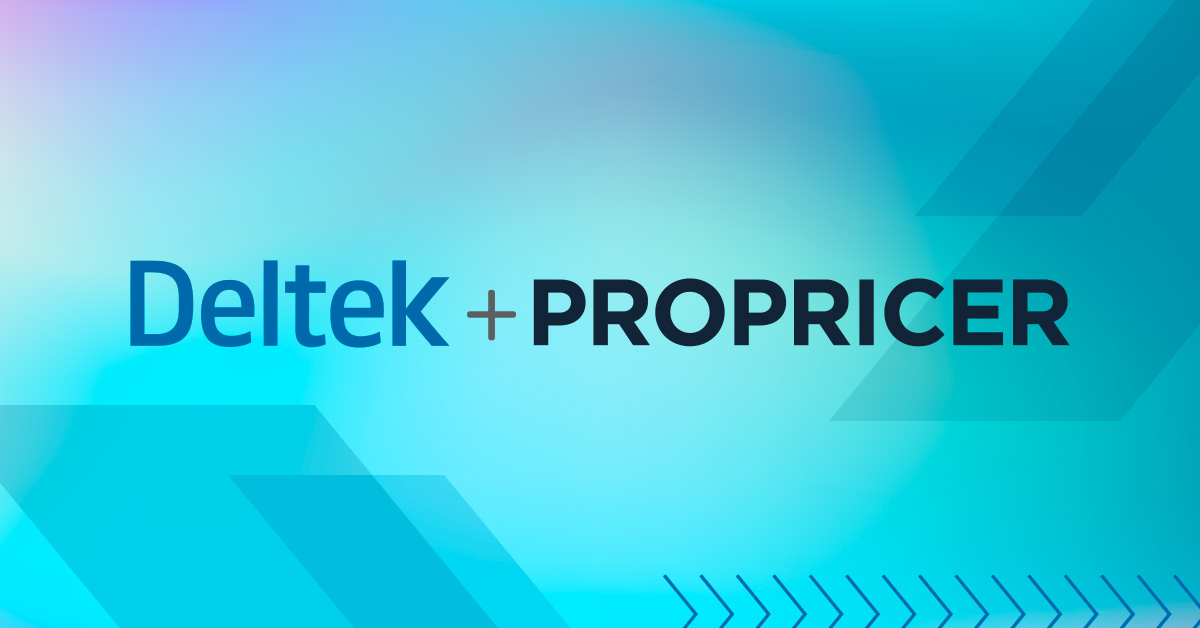Bureaucratic hurdles used to choke government contracting in a tangle of red tape. But now, thanks to advancements in Artificial Intelligence (AI), Machine Learning (ML), and Natural Language Processing (NLP) technologies, the government proposal process is undergoing a revolutionary makeover, greatly enhancing its efficiency.
This transformation is especially crucial for small and medium-sized businesses aiming to navigate the road to federal procurement success effectively.
AI, a sophisticated branch of computer science, enables systems to perform tasks typically requiring human intelligence. This blog will explore AI’s immense potential to enhance government administrative procedures involved in the contract process, al, and aspects that enhance a contractor’s likelihood of securing a proposal win.
How does the federal government use AI?
The recent appointment of a Chief AI Officer by the Department of Homeland Security (DHS) reflects the federal government’s evolving reliance on AI.
Given the need for a C-level executive in at least one agency to guide the use of it, the trend will likely soon spread to other agencies.
Here are some ways AI is enhancing the contract process on the government side of the game right now right now:
Data analysis in contract funding
Using traditional methods, determining a contract’s appropriate funding often involved manual analysis of past data, current budgets, and projected spending. It was a time-intensive process and often full of mistakes.
Enter AI. Now, we have algorithms that can process vast amounts of data in seconds, sifting through years of budgetary figures and analyzing spending patterns. The result? More accurate and efficient budget forecasts.
Predictive modeling
But beyond data analysis, AI can foresee potential financial pitfalls and determine significant cost savings. Predictive modeling can analyze different contract scenarios in real-time, ensuring agencies prepare for various possibilities—such as when an RFP suddenly needs to shift from a time-and-materials to a cost-plus approach—so they can effectively allocate funding.
The Department of Defense (DoD) uses Machine Learning (ML), an AI subset, to develop predictive models for scheduling equipment maintenance. ML is big business for Palantir Technologies. The Army Material Command (AMC) struck an $85 million deal with the company to forecast equipment repair and end-of-life via predictive modeling software, which will slash the timeframes that missing parts or equipment breakdowns keep the DoD from being continuously ready for defense.
Consolidating contract vehicles
Innovations like the Army’s Determination of Responsibility Assistant bot (DORA) have streamlined vendor information processing, reducing the time contracting specialists gather information from government databases and websites and create reports.
For each vendor submission, this task usually required one hour to complete manually. Now, it takes five minutes using AI.
The Internal Revenue Service (IRS) provided the template for DORA through its own Contractor Responsibility Bot, and the U.S. Department of Health and Human Services now also uses AI to similarly aggregate contract vehicles.
Assessing past performance
Seven years ago, the Department of Homeland Security (DHS) Procurement Innovation Lab (PIL) started using AI to help agency contracting pros apply contractors’ past-performance data to their current proposal submissions. This process can speed source selection substantially.
These pilots led to an RFP: Five tech companies submitted proposals to create SaaS modules using AI to enhance the reliability of the Contractor Performance Assessment Reporting System (CPARS). This platform sorts the information most relevant to a source selection, including past performance data.
Expediting solicitation reviews
The GSA’s solicitation review tool (SRT) and the IRS’s Contract Clause Review Tool have reduced the time required for contract document reviews and solicitations—dissemination of an RFP—from hours to mere minutes. Example: Ensuring RFPs include Section 508 requirements to improve accessibility for the differently abled.
Another example: Identifying missing, outdated, or incorrect provisions and clauses, which reduces review time from six hours to six minutes per document.
Modifying contracts
The IRS DATA Act Bot employs a multitude of technologies to modify contracts and related documents swiftly, at the same time enhancing data quality. The IRS created it to clean up Federal Procurement Data System data. Since then, the Service has leveraged the platform to add telecommunications security language to 1,466 IRS contracts and review and correct coding in COVID-19-related transactions at less than a quarter of a second per fix.
Accelerating contract success
AI analysis of contract data has significantly boosted contract management, as illustrated by the HHS Accelerate program.
HHS Accelerate monitors contracts to ensure they unfold according to agreed-upon terms and conditions. Accelerate then generates recommendations to enhance contract creation, improve performance, and draft better future contracts.
Crafting contract RFPs
Collaborations like the one between the Defense Department’s Chief Digital and Artificial Intelligence Office (CDAO) and Trenchant Analytics LLC focus on developing AI-powered contract writing systems to enhance the speed and accuracy of document creation.
This is a significant task, as these documents involve complex language and require a deep understanding of the government contracting process. The system employs NLP to automatically generate accurate and consistent wording, structure, and formatting.
How is AI used in government contracting proposals?
AI’s power throughout the proposal vetting and approval process is multifaceted, aiding contractors in:
Managing risk
AI analyzes patterns and trends in past proposal volumes to mitigate errors or compliance issues in your current submissions, creating a preventive approach to contract management.
Prevention is always better than cure. Let’s explore this with a real-world example:
Company X, a mid-tier government contractor, responded to an average of 50 proposal RFPs annually. Over five years, they began noticing a recurring compliance issue. Approximately 20% of their submitted proposals received flags for not adhering to Section 508 Standards, which pertains to electronic and information technology accessibility for persons with disabilities. Each non-compliance event resulted in penalties, resource-consuming corrections, and delays, not to mention reputational damage.
Company X implemented an AI-driven analysis of their past proposal volumes to tackle this. The firm programmed its system to analyze past submissions' patterns related to Section 508 Standards compliance errors.
After analyzing five years' worth of proposals, the AI tool identified that most Section 508 compliance errors centered around a common theme: poorly formatted appendices containing charts and graphics not accessible to visually impaired users.
Within a year of implementing this AI-driven approach, Company X saw a remarkable 90% reduction in Section 508 compliance errors in their new proposal submissions.
Drafting contracts
AI’s capability to generate contract drafts in a matter of minutes, if not seconds, is paramount to enhancing the efficiency of contract creation.
GreenTech Enterprises, a cutting-edge sustainable technology firm, grappled with a time-consuming challenge. As they rapidly expanded, they were often required to draft multiple contracts weekly, if not daily. These custom contracts went to specific agency clients, involving unique clauses, specifications, and terms. The manual drafting process was becoming a bottleneck, consuming valuable hours that could have addressed product development and strategic planning.
Recognizing the need for a transformation, GreenTech turned to AI-driven contract generation. After integrating a state-of-the-art AI contract tool into their system, they could input specific requirements, clauses, and parameters, which the AI then used to quickly generate a precise, tailored contract draft.
For instance, when establishing a teaming relationship with SolarSolutions Inc., GreenTech fed the AI system the desired terms, partnership specifics, and previous contract templates. In mere minutes, a comprehensive and error-free draft emerged, capturing the essence of GreenTech's stipulations and the unique needs of the partnership with SolarSolutions Inc. This newfound efficiency drastically cut down the company's negotiation lead time, enabled a faster time-to-market, and fostered a reputation for GreenTech as an agile industry player.
Monitoring contract performance
AI’s role in delivering watchouts during the contract process? Providing real-time feedback to resolve potential issues promptly. Here’s an example: In the offices of a leading government contracting firm, a project manager named Alex prepares to submit a crucial deliverable. As he uploads the documents, an integrated AI system instantly reviews them against the contract's terms and conditions.
An alert appears: a minor discrepancy in a report appendix doesn't align with the stipulated format. Thanks to this immediate feedback, Alex can swiftly correct the issue, ensuring that the deliverable meets the exact requirements, preventing costly delays and potential penalties. Such is the power of AI in modern contract performance monitoring – acting as a vigilant sentinel.
Flagging high-risk clauses
AI is becoming instrumental in eliminating high-risk clauses in solicitations, helping you create contracts with accurate and consistent wording.
Consider Sarah, a seasoned contract specialist at a top-tier government contracting firm. As she reviews a newly received solicitation, her company's AI-driven tool scans the document in parallel. While Sarah's experienced eyes are invaluable, AI flags a seemingly innocuous clause that, upon deeper scrutiny, could expose the firm to significant financial liability.
This high-risk clause slipped through similar reviews in the past, but the precision and consistency of the AI tool instantly recognized it. Sarah promptly rephrased the clause, ensuring her company's interests remained safeguarded. This synergy between human expertise and AI's accuracy transforms the contracting landscape.
Experience the power of ML with ProPricer BOE Pro
ProPricer BOE Pro is an innovative cloud add-on meticulously crafted to elevate the ProPricer Contractor Edition experience. By harnessing the power of ML-based predictive text entry, this tool enables you to streamline and fortify the process of crafting proposal BOE narratives, even in the face of sudden adjustments and evolving requirements.
BOE Pro ensures a seamless and predictable workflow for estimators and writers, featuring a user interface that mirrors the familiar functionality of ProPricer Contractor Edition. It also automatically synchronizes text-based estimate narratives with your pricing data.
Combining these two solutions creates a distinct competitive advantage for contracting firms during the proposal process. Take advantage of the opportunity to witness this game-changing technology in action. Contact us now to request a demo.>
It’s still early days for AI
While AI programs are still relatively nascent as applied to contract proposals, their shortcomings—inaccuracies presented very confidently—are cautionary. There’s a need for specialized skills in refining prompts for generative AI and carefully training it for use in highly regulated environments such as procurement. Not to mention fact-checking each piece of substantive information presented during the contract process.
Still, AI’s very trainability and capacity for “learning” from its mistakes make it likely that AI will improve rapidly. A differentiated, compliant proposal written entirely by AI? It’s closer than we think.
Sources




